In a recent article from Captive.com, our SVP, Prabal Lakhanpal explains how captive insurance can be a viable solution for employers to combat the current hard market. Check out the full article here.
Our Senior Vice President, Prabal Lakhanpal, was quoted in an article from Captive.com spotlighting how private equity firms can utilize captive insurance to lower the costs of risk. You can find the full article here.
Our Vice President, TJ Scherer recently wrote an article for Captive.com outlining steps employers should consider when forming a captive. You can find the full article here.
As seen Captive International’s US Awards 2024
A conversation with Spring Consulting Group’s experts sheds light on the importance of conducting thorough feasibility studies before establishing captives.
“Key stakeholders can’t make informed decisions without a clear picture of costs and potential savings.”
Peter Johnson
A crucial step in determining whether a captive is the right fit for a company is conducting a comprehensive feasibility study. This process involves more than just a surface-level review—it’s a deep dive into the organisation’s risk profile, historical data, and financial structure to ensure the most effective and efficient use of a captive.
At Spring Consulting Group, experts such as Peter Johnson and TJ Scherer lead the charge in guiding clients through this vital evaluation. Their approach combines deep actuarial analysis, extensive industry knowledge, and an independent, unbiased perspective to help businesses uncover the full potential of captives.
In this interview, they shed light on the importance of feasibility studies, the necessary datapoints, the value of independent reviews, and how Spring’s approach sets it apart in the competitive captive consulting landscape.
Q: Why is a captive feasibility study important?
TJ Scherer: A feasibility study provides an independent assessment of the blueprint for a captive insurance company. A company needs someone to evaluate what risks should and can go into the captive and determine the appropriate retention levels. It’s about ensuring that the captive qualifies as a true insurance company, and that the insured reviews and concurs with the proposed structure.
There are various structural options such as cells, single parents, incorporated cells (both onshore and offshore) and group captives.
It’s essential to select the right captive structure and domicile that align with the company’s goals and risk profile. Without a holistic evaluation, significant factors could be missed.
Q: What kinds of datapoints are needed to conduct a feasibility study?
Peter Johnson: Initial required datapoints to kick off the review include:
- Current policy details
- Historical exposure data for each line of business
- Claims history
Metrics such as the internal rate of return and tax rates and considerations at Federal and state levels are crucial. Receiving five to 10 years of the referenced historical data helps establish the initial review and thorough process that is generally required by the commercial markets who are being proposed the captive programmes.
Key stakeholders can’t make informed decisions without a clear picture of costs and potential savings, and that’s where data becomes indispensable.
TJ Scherer: You need to consider anything that could affect the projections:
- Organisational structures
- Tax environments
- Growth potential
- Acquisitions
Without comprehensive information, recommendations might not reflect the true state of the company and proposed captive structure. Open communication is key to ensuring our analysis reflects both current and future realities.
Q: What is the value of an independent viewpoint?
TJ Scherer: Independence allows an unbiased review of the current and proposed programme. Sometimes, the players involved are too invested in the status quo, which means options such as captives aren’t fully explored. By engaging an independent consultant, you’re ensuring that someone is evaluating the programme without an agenda, is focused solely on the insured and is agnostic to the domicile or ultimate structure of the proposed programme.
Peter Johnson: Having an independent review with a captive consulting focus can shed new light on value-adding options for the insured.
“The key is to start early enough to implement changes before issues become larger concerns.”
TJ Scherer
Q: How does loss experience come into play?
Peter Johnson: Loss experience is a vital factor, especially when determining whether a captive is a viable solution and to determine appropriate captive premium level. For example, if your loss ratio is consistently low—around 50 percent or below—it may indicate inefficiencies in the commercial market, allowing a captive to become a more cost-efficient risk funding solution.
When it comes to developing captive premiums, we analyse historical loss experience along with exposure and captive retention levels to determine the projected funding for the captive, ensuring there’s enough premium to cover expected losses and operating costs in expected and adverse scenarios.
TJ Scherer: It’s important to consider the frequency versus severity of losses. A high loss ratio could be due to one large claim over 10 years, but commercial markets may still hold that against the insured on renewal. Understanding these nuances is fundamental in designing the right retention and funding levels.
Q: What key insights can be uncovered from a captive feasibility study that inform a captive strategy?
TJ Scherer: A feasibility study can open options the insured may not have considered. For example, an insured might think its premiums are too high, but upon evaluation, they could find that their premium is actually reasonable, but there are possible savings by changing the current retention.
These studies broaden the insurance programme’s view, exploring the total cost of risk and the potential savings and loss scenarios, all focused on helping make go/no-go decisions on the captive strategy.
Peter Johnson: The study provides a transparent view of what the next few years could look like from a financial standpoint. It highlights costs such as upfront capitalisation and ongoing premiums which provide decision-makers with the information they need to make informed choices. It can address the best course of action around what exposures to add to the insured’s captive, and when.
Q: What makes Spring’s captive feasibility study process unique?
Peter Johnson: At Spring, we have internal credentialled actuaries that span both benefits and property and casualty (P&C), which is rare in the industry. Our actuarial expertise and integration of our consulting expertise across multiple disciplines allows us to deliver powerful, independent feasibility studies.
Everything is typically handled in-house and heavily peer-reviewed, ensuring that each study is viewed through various lenses to push the analysis further.
TJ Scherer: Our review process involves blind evaluations, where someone unfamiliar with the project assesses the study, ensuring it aligns with the insured’s goals and objectives. This internal scrutiny helps us address the full scope and deliver a comprehensive solution.
Q: Do you ever conduct ‘refeasibility’ studies, and if so, what is their value?
Peter Johnson: Yes, refeasibility studies are valuable, especially for existing captives. We recently worked with a large energy company to revisit its entire programme. By reassessing the insured’s current coverages, retentions, and domicile, we confirm the current structure is maximising efficiency or propose possible areas of change. It’s a process we recommend every three to five years to ensure the programme remains optimised.
TJ Scherer: Captives need to adjust to the market and their insureds’ needs, so refeasibility studies or annual actuarial updates are essential. Without periodic reviews, captives may lose their value or fail to meet the insured’s goals over time.
Q: When is the right time to start a captive feasibility study?
TJ Scherer: There’s no wrong time, but the sooner, the better. Some clients like to initiate a feasibility study right after renewal, while others may prefer mid-term evaluations. The key is to start early enough to implement changes before issues become larger concerns.
Each insured operates on a different timeline, but a typical feasibility study takes four to eight weeks from the start. From there, if a decision to form is made, it can take another two months or more to get to formation, depending on internal approvals and other timelines.
Captive International has released the winners for the 2024 US Awards. Spring is proud to announce that our team has been recognized among the best in the industry for Top Feasibility Study (Firm), Top Feasibility Study (Individual) and Top Captive Consultant (Individual). You can access the full list of winners here.
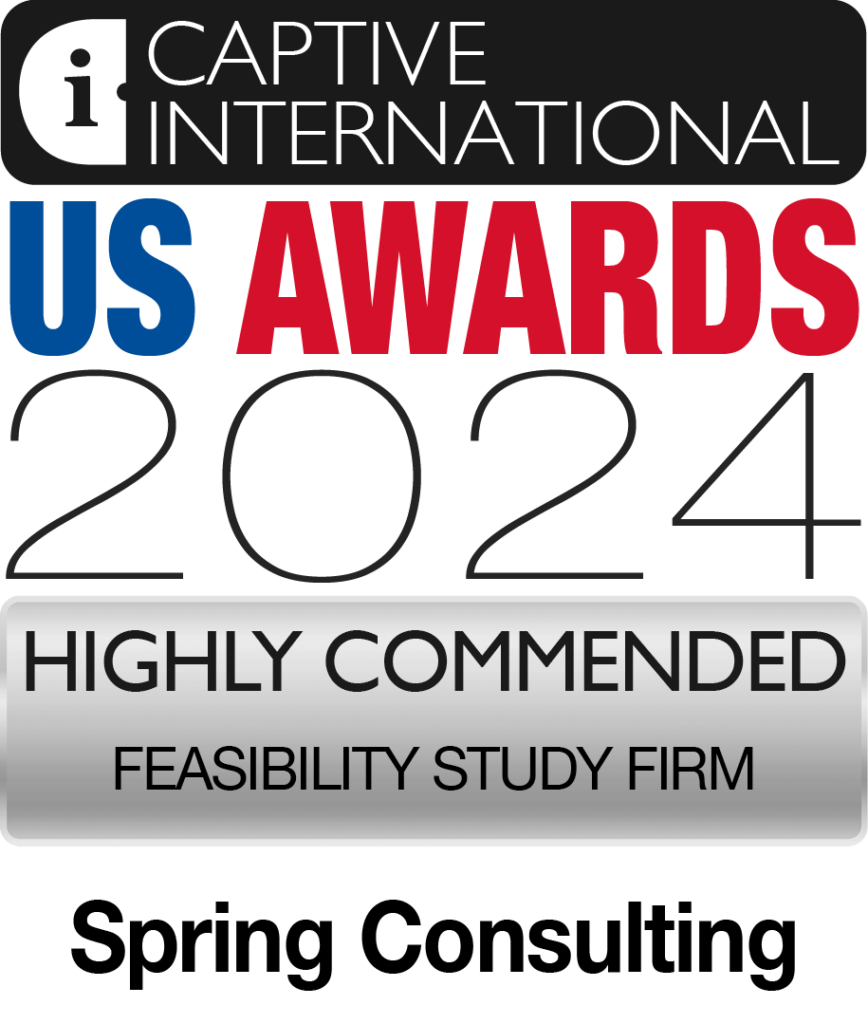
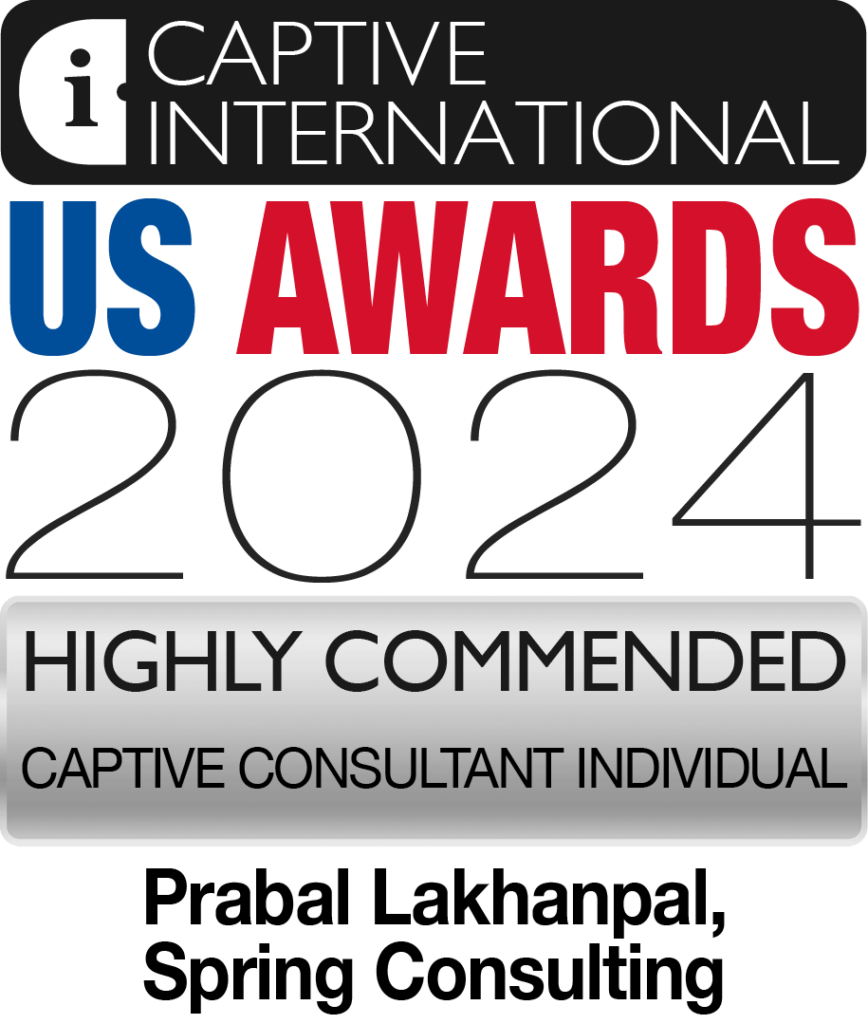
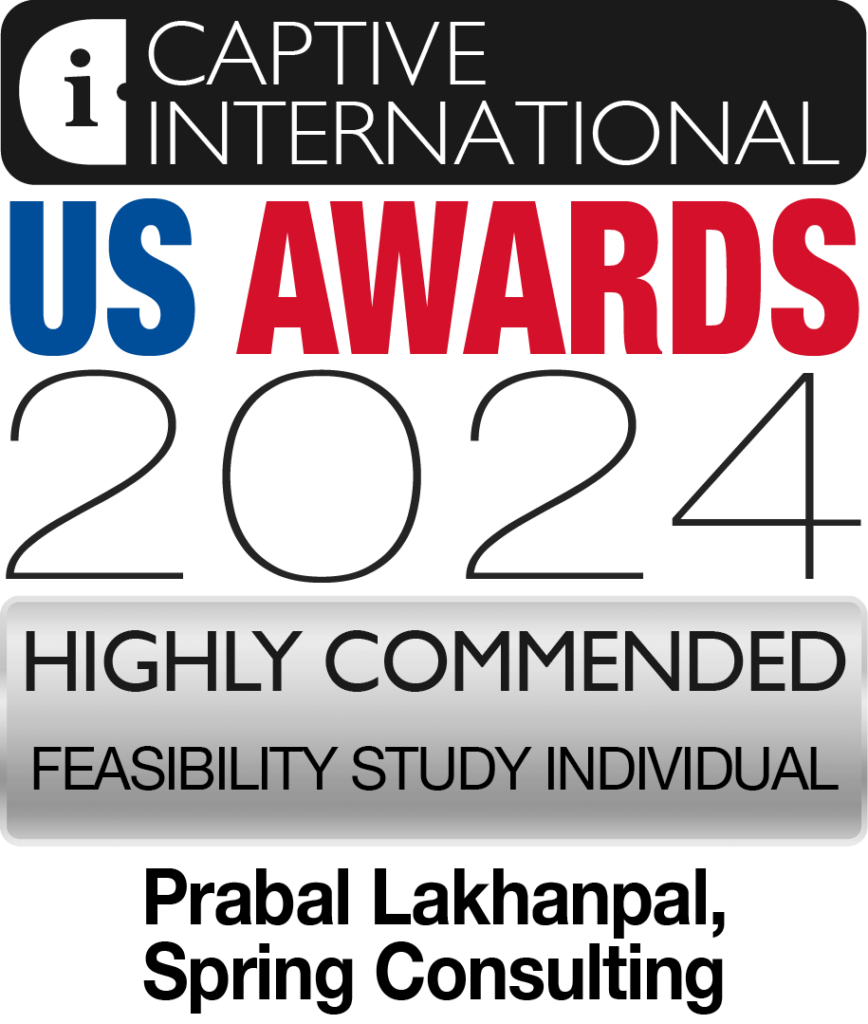
In a recent podcast from the International Risk Management Institute (IRMI), or Chief P&C Actuary, Peter Johnson gives an inside view into the actuarial methodologies that go into calculating loss development patterns and optimizing risk management strategies across long-tail lines. You can find the full podcast episode here.
Spring has won Captive Review’s US Awards the top Captive Consultant of the Year. You can find the full list here.
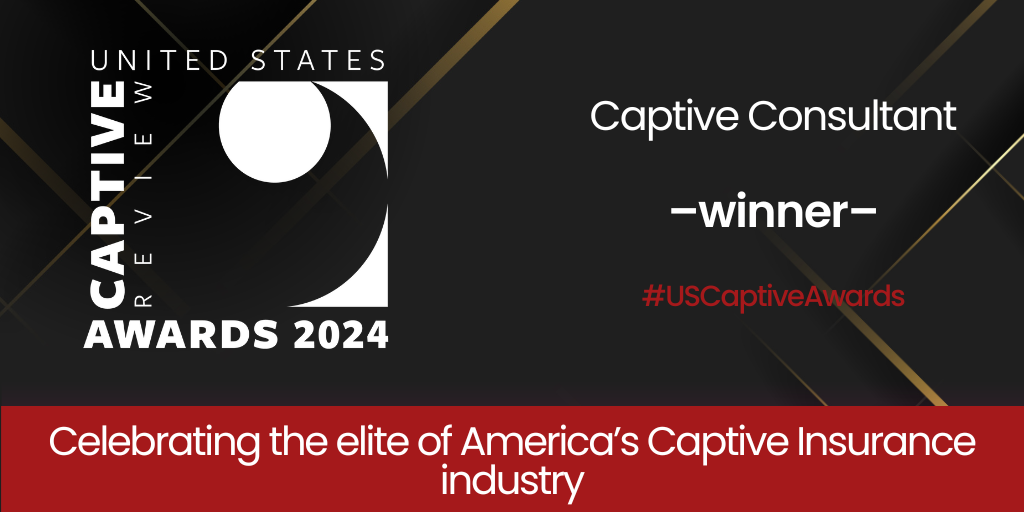
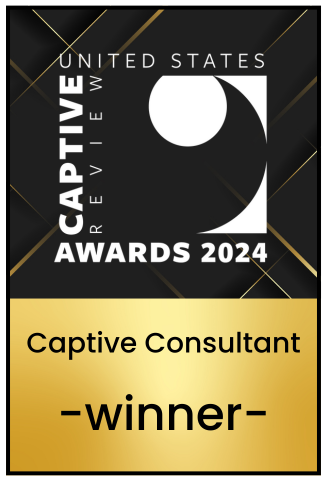
Our captive team joined the Global Captive Podcast to record an episode reviewing Spring’s recent efforts in securing tentative authorization for a client from the Department of Labour regarding an ERISA exception for a pension risk transfer. You can find the full podcast episode here.
Spring recently published an article on Captive.com illustrating 7 ways captive insurance can benefit organizations. Check out the full article here.